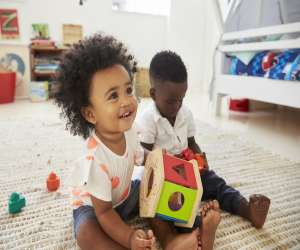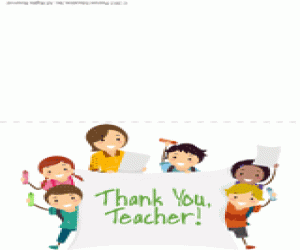by: Alvin Poussaint, M.D. and Susan Linn, Ed.D.
Raising our children and understanding racial diversity in our society can't be seen as separate tasks -- they're both part of our job as good parents. So how do we go about it?
Our children learn their attitudes from us -- the adults around them. We all have ways of thinking and acting that may seem natural to us but aren't necessarily what we want to pass along to our children. In fact, if we don't examine these attitudes carefully, they can be harmful to our children's understanding of their world.
Check out 25 Children’s Books to Teach Kids About Race and Racism to help get the conversation started.

A Bug Is a Bug Is a Bug?
Children don't come pre-equipped with reactions to each new experience in their lives. For instance, all young children instinctively put things they want to explore into their mouths. But an Inuit child of the Arctic who put a grub into his or her mouth would learn from a pleased parent that grubs are a delicious springtime snack. A suburban American child learns from a horrified parent that grubs are too disgusting to be touched, let alone eaten. Now, do you often feel that you need to learn how to eat unusual insects in this country? Probably not. But we do need to understand our own learned prejudices about people in order to avoid teaching them to our children. We need to make sure that we are showing our children the most positive ways to interact with the world in which they live.

Parenting in Families of Color
Families of color have an especially difficult job. They must raise their children to be free of prejudice while helping them to develop a positive identity in the face of prejudice. A family lifestyle that reflects confidence and self-respect is the key ingredient here.
Parents who show their children a sense of their pride in ordinary day-to-day living -- without shielding their children from racial realities -- have an easier task. Whether a family is Latino or Asian American, African American,or Native American, its kids' books, dolls, and other toys should be multiracial. Children of color, like white children, should have toys to play with that reflect all races and ethnicities, including their own.
In the same way, a child's questions about racial and ethnic differences need to be handled with a calm understanding of what the child is really asking. When a six-year-old calls his skin color "dirty" and wonders why it doesn't wash off, he isn't developing a "negative identity." He's looking for an explanation of the differences he's noticed as a normal, curious child. He needs a simple, supportive explanation, such as, "People have different skin colors -- brown, white, black, yellow -- and you have a pretty brown color like Mommy and Daddy. It isn't dirty, and it doesn't wash off."

Coping with Prejudice
When children are hurt by racial or ethnic cruelty, though, it's harder to restrain an immediate emotional response. It's important, however, to try to comfort and explain instead of reacting angrily. If your child is called an ugly name, for instance, it's a great temptation to fly into a blind rage. But what your child needs from you is reassurance that she is a good person and that people who call her such names are not nice people. At the same time, she needs to know that all people of that particular group don't act this way, and that there are good and bad people of all ethnic groups and races.
Children need encouragement to be assertive in these situations, at least saying to the name-caller, "I don't like you calling me bad names and I want you to stop." And it's important to stress that talking out a problem is always the thing to try first. If a situation gets out of hand, a parent may need to intervene -- and your child needs to know that you are ready to back her up -- but children should be encouraged to initially try to handle these difficulties themselves. Then, if a similar incident occurs again, they will be better able to deal with it. Whatever the problem, however, parents of color need to ensure that their children develop coping mechanisms that don't compromise their children's dignity.

Parenting in White Families
White parents face some different issues in raising their children to be free of prejudice. The realization that their race protects them from directly experiencing most kinds of prejudice will call for some different responses. But one basic approach is the same: remembering that all children learn their attitudes from the adults around them. And so for white parents, taking a careful look at their own feelings about other ethnic and racial groups is a most important first step in helping their children to grow up without prejudice.
A second crucial step is understanding that our children learn most from their day-to-day experience. We must not, of course, speak or act in prejudicial ways. But that's not enough by itself. Children can absorb prejudices from the world around them, or simply grow up without knowing anything about other racial groups. White parents must actively work to help their children develop healthy racial attitudes.

Making Diversity a Part of Life
White children need to see people of other ethnic groups and races as being part of their daily lives. Ideally, this means coming to know neighbors, school mates, and family friends of different races. Many of our neighborhoods, however, are so racially segregated that there is very little chance for this to happen. Parents can make sure, though, that their children have multicultural toys and storybooks, and that the television programs and movies they watch are racially and culturally diverse.
But even where communities and schools are integrated, there can be problems. Many white parents ask what they can do if their children have had negative experiences -- such as fights -- with children of color. The answer is: You need to try to help your child have good experiences with other playmates from that ethnic group or race. And you need to remind your child -- as all parents should remind their children when they experience prejudice -- that there are good and bad people in all races. You can point out that your child has white playmates he may not like, but that doesn't make him dislike all white children.

Bad Feelings and Good Friendships
It can also help to explain that some children have had such bad experiences because of racial prejudice that they feel angry toward white people or people from groups different from their own. This should not be said to excuse a particular behavior, but to help the white child understand some of the larger social issues. And white parents should never allow their children to accept abuse from other races or ethnic groups because they feel guilty about being white. Healthy relationships between races can't be based on guilt. Good friendships need to be based on mutual respect and equality.

Every Family's Job
All parents can and must work to see that their involvement in local schools, religious groups, and community organizations helps to promote racial respect and cooperation. Again, our daily lives are the most influential teaching tools we have. Given the racial conflicts and misunderstanding that are still so much a part of our society, we can't expect our children to grow up free of prejudice with no effort on our part. Changed racial attitudes in our children's generation can only come from our positive work today.

More Resources
- Talking to our Children About Racism, Prejudice, and Diversity
by Susan Linn, Ed.D., and Karen McGill Arrington, M.A.
A brochure for parents of five- to eight-year-olds, largely in question-and-answer format. Available from: The Leadership Conference Education Fund, 1629 K Street, N.W., Suite 1010, Washington, DC, 20006 - Prejudice and Your Child
by Kenneth Bancroft Clark
Discusses racial awareness and prejudice in children.
Published by: Wesleyan University Press, Middletown, Connecticut, 1988 - Raising the Rainbow Generation: Teaching Your Children to be Successful in a Multicultural Society
by Darlene Powell Hopson
Designed for parents, teachers, and other caregivers of children under 12.
Published by: Simon & Schuster, New York, 1993 - Teaching Tolerance: Raising Open-Minded, Empathetic Children
by Sara Bullard
Written by the editor of the magazine Teaching Tolerance, a periodical for educators published by the Southern Poverty Law Center.
Published by: Doubleday, New York, 1996



